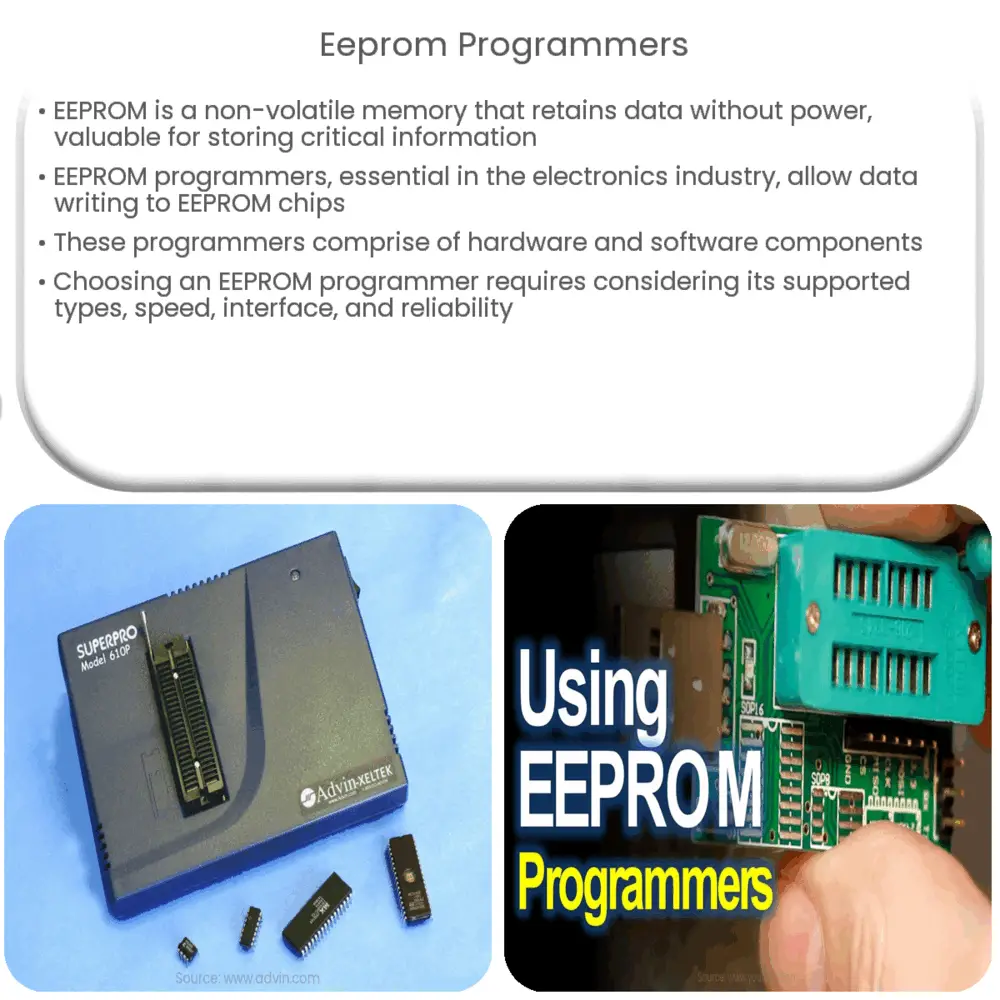Explore the world of EEPROM programmers, their features, and applications. Learn how these tools are vital in electronic data manipulation.

Understanding EEPROM Programmers
The world of digital electronics has evolved significantly over the years. Central to this evolution is the concept of data storage and retrieval. This is where Electrically Erasable Programmable Read-Only Memory (EEPROM) comes into play. EEPROM is a type of memory that retains data even when power is switched off. This article aims to focus on EEPROM programmers, essential tools for programming these types of memory.
EEPROM and Its Significance
Before delving into EEPROM programmers, understanding EEPROM itself is crucial. EEPROM is a non-volatile form of memory that can be both read and electronically erased. Its primary advantage is its ability to retain stored data even in the absence of power, making it highly valuable in storing critical system information, device configuration settings, and user preferences across power cycles.
Moreover, individual bytes in an EEPROM can be independently read, erased, and rewritten, allowing for highly efficient and flexible data manipulation. This feature, unlike other non-volatile memories that require the entire memory to be rewritten, has greatly influenced its wide adoption in various applications including automotive electronics, medical devices, industrial process control, and more.
EEPROM Programmers: The Fundamentals
The main role of EEPROM programmers is to write data to the EEPROM chips. They provide the interface for data transmission from a computer or another controller to the EEPROM. A typical EEPROM programmer will comprise hardware to connect to the EEPROM chip and software to send commands and data.
- Hardware Component: This comprises the programmer device and cables that connect to the EEPROM chip, either in-circuit or out-of-circuit. The design of this hardware depends on the type of EEPROM chip in use, as they can have different pin configurations and operating voltages.
- Software Component: This is typically a PC application that communicates with the programmer hardware, sending the necessary commands and data to be written into the EEPROM. The software also reads back data from the EEPROM for verification purposes.
In the following section, we’ll delve deeper into the operational nuances of EEPROM programmers, exploring their key features, functions, and considerations for choosing the right EEPROM programmer. Stay tuned!
Key Features of EEPROM Programmers
When choosing an EEPROM programmer, certain features should be taken into consideration. These features ensure the efficient functioning of the programmer and can enhance the user’s experience.
- Supported EEPROM Types: Different programmers support various EEPROM types. Some programmers are universal and can support a wide range of EEPROM chips, while others are specific to certain types.
- Programming Speed: This refers to the rate at which data can be written and verified on the EEPROM. Faster programming speed leads to improved productivity, especially for large volume programming.
- Easy-to-Use Interface: The software interface should be user-friendly, allowing easy navigation and understanding of its functionalities.
- Quality and Reliability: The programmer should be robust and reliable, capable of withstanding long hours of operation without error.
Application of EEPROM Programmers
EEPROM programmers find their application in various industries. They’re used in device manufacturing where the device’s firmware or configuration data needs to be written onto the EEPROM. They’re also used in electronic repair and reverse engineering to read or modify the content of an EEPROM. Additionally, hobbyists and researchers use EEPROM programmers for experimentation and learning purposes.
Conclusion
EEPROM programmers are an essential part of the electronics industry, enabling efficient and effective data manipulation on EEPROM chips. Their role in writing and modifying data on non-volatile memory chips is critical in a wide range of applications, from device manufacturing and electronic repair to research and hobbyist experimentation.
Choosing the right EEPROM programmer involves considering several features including the supported EEPROM types, programming speed, interface usability, and overall quality and reliability. As the digital electronics landscape continues to evolve, EEPROM programmers will undoubtedly remain integral, continuing to advance in alignment with the needs and demands of the industry.

